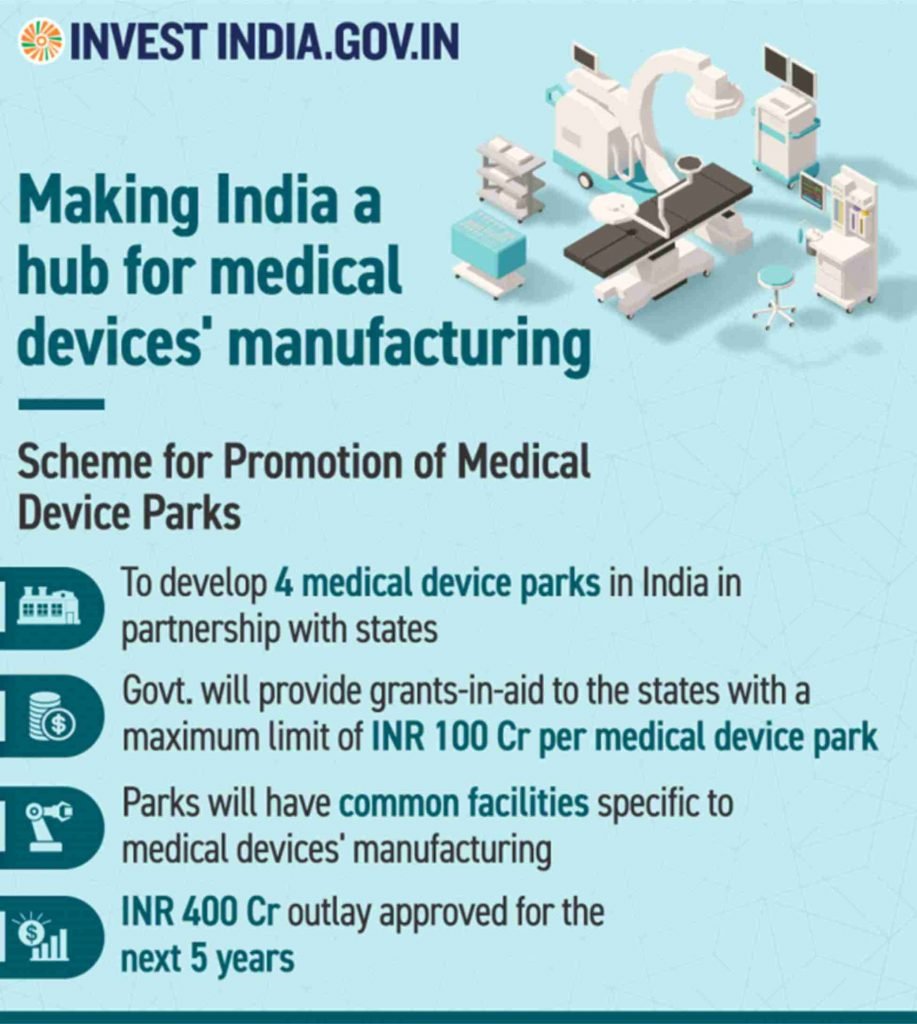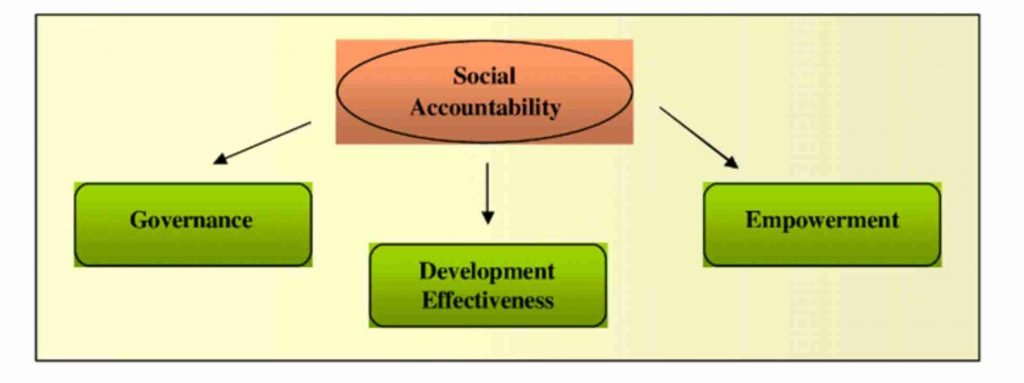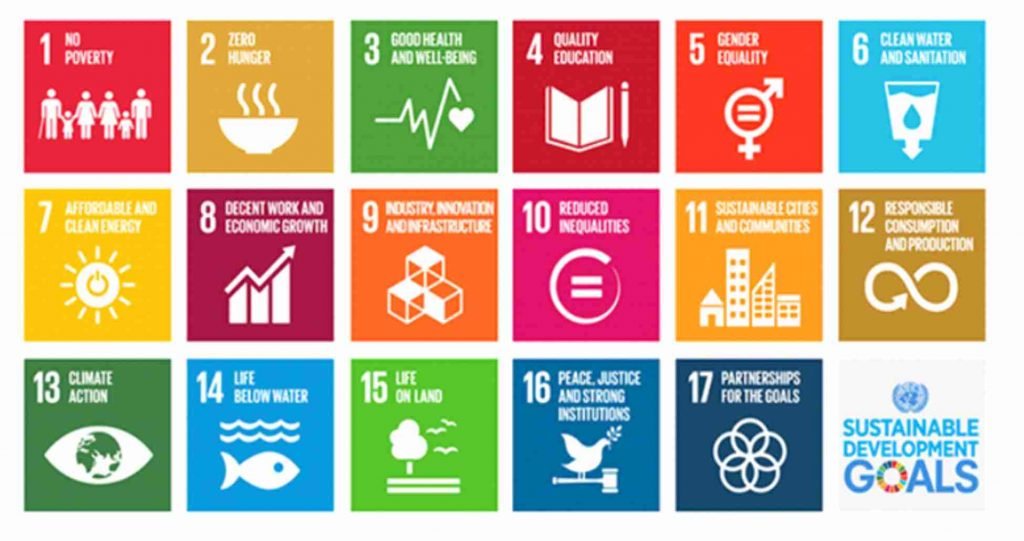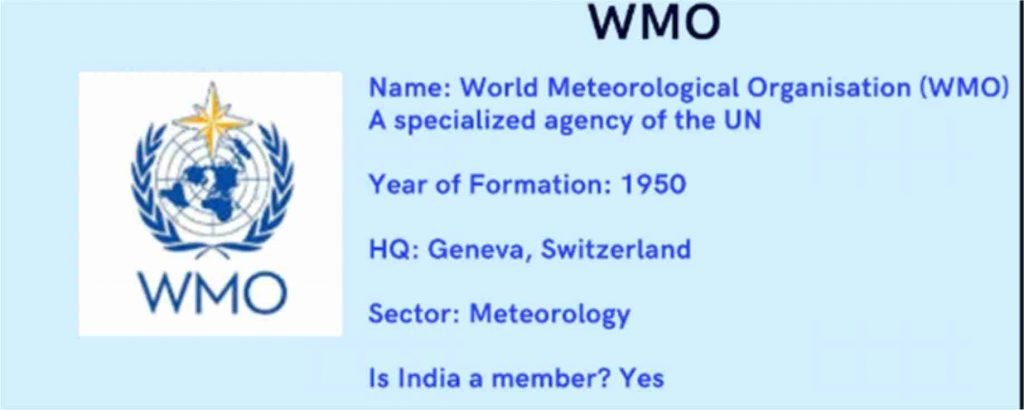Medical Device Parks
The Hindu
GS 2: Government Policies and Interventions
Context:
- The Union government has recently notified a scheme to promote medical device parks at a financial outlay of ₹ 400 crore till financial year 2024-2025.
About:
- The scheme aims to ensure easy access to testing and infrastructure facilities.
- It is expected that this will bring down the cost of production of medical devices, thereby making them more affordable for domestic consumption.
- The financial assistance for a selected medical device park would be 90% of the project cost of common infrastructure facilities for the northeastern and hilly States. For the rest, it would be 70%.
- However, a maximum assistance under the scheme for one such park will be ₹ 100 crore.
- The Centre has granted in-principal approval for the parks in Himachal Pradesh, Tamil Nadu, Madhya Pradesh, and Uttar Pradesh after it received proposals from as many as 16 States and Union Territories.
Background:
- The Medical Devices Industry in India is the 4th largest in Asia and among the top 30 in the world.
- It is a highly capital-intensive industry and boasts immense potential in terms of skilled manpower and research & development.
- Initiatives like Make in India and Atmanirbhar Bharat Abhiyaan have given a much-needed thrust to the manufacturing of medical devices in the country.
- To further promote domestic manufacturing and develop related infrastructure, the Government of India has approved the following schemes:
- Production Linked Incentive (PLI) Scheme for Promoting Domestic Manufacturing of Medical Devices
- Promotion of Medical Device Parks
Promotion of Medical Device Parks
- The Scheme for Promotion of Medical Device Parks has been notified to develop common infrastructure facilities (CIF) which in turn will reduce production cost of medical devices manufactured in the country.
- The scheme has a total outlay of about INR 400 Cr.
- Financial assistance will be provided for the creation of CIFs in four medical device parks selected under the scheme.
- The assistance will be 90% of the project cost in northeastern states and hilly states while it will be 70% in other states.
- A medical device park project suggested by a state and selected under the scheme will be implemented by a State Implementation Agency (SIA) and will receive a maximum assistance of INR 100 cr.
- The scheme will be valid for a period of 5 years from FY 2020-21 to FY 2024-25.

Social Accountability Law
The Hindu
GS 2: Government Policies and Interventions
Context:
- A State-wide campaign has been launched in Rajasthan for demanding passage of the social accountability law in the next Assembly session.
Issue:
- Activists pointed out that countless citizens were suffering from an inability to access their rights and have their complaints redressed in a time-bound manner, while there was “no accountability of errant government officials”.
- In 2019,this committee was constituted to advise the government on the drafting of the Social Accountability Bill and draft was submitted by the Committee in 2020.
- The State government is yet to take an action on the report submitted by a committee in February 2020 along with the draft of the proposed statute.
- The committee, headed by former civil servant Ram Lubhaya, strongly emphasised the need for a legal framework to guarantee accountability to the citizens and highlighted the limitations in the existing administrative system which prevented timely delivery of services.
- The Rajasthan Guaranteed Delivery of Public Service Act, 2011and The Rajasthan Right to Hearing Act (2012) have already been around but they were repealed due to some major issues.
About:
- World Bank defines social accountability as an approach towards building accountability that relies on civic engagement, i.e., in which it is ordinary citizens and/or civil society organizations who participate directly or indirectly in exacting accountability.
- It involves the stakeholders like citizens, civil society, NGOs and others at various levels who engage in monitoring or evaluating a particular project, programme or policy, share control over the resources, provide feedback and take corrective actions when needed.
- Thus, it mobilizes citizens at the local level to demand better services thus making the services more effective and economic as well.
- It brings in good governance while giving the community a sense of participation, ownership, and empowerment.
- In a public sector context, social accountability refers to a wide range of actions and mechanisms that citizens, communities, independent media and civil society organizations can use to hold public officials accountable.
Major Principles of Social Accountability:
- Jankari (Information)
- Bhagidari (Involvement and participation of citizens)
- Karyawahi (Time bound action)
- Suraksha (Protection of Citizens)
- Sunwai (Citizen’s right to be heard)
- Janta Ka Manch (Collective Platform)
- Prasar (Report Dissemination)

Some examples of social accountability as implemented in various places include:
- Participatory Planning and Policy Formulation (Kerala, Brazil, Bangladesh);
- Participatory Budget Analysis (Gujarat);
- Participatory Expenditure Tracking System (Uganda, Delhi, Rajasthan);
- Citizens’ Surveys/Citizen Report Cards (Bangalore, Maharashtra, Ukraine, Philippines, Pakistan);
- Citizen Charters (Andhra Pradesh, Karnataka); and
- Community Scorecards (Malawi, Maharashtra, Andhra Pradesh)
Conclusion:
- It has been well established that social accountability mechanisms can contribute to improved governance, accelerate development, and create effectiveness through better service delivery and empowerment.
- In addition to these methods and tools, many more exist such as campaigns for electoral reforms, public interest litigation, social audits, independent evaluation and so forth.
- At state level often janta durbar and mohalla sabha are organized to involve citizens more actively.
Rising CO2 Concentration
Down to Earth
GS 3: Environment and Conservation
Context:
- Recently, the World Meteorological Organization (WMO) has published a new report on Climate Indicators and Sustainable Development: Demonstrating the Interconnections.
About:
- The rising concentration of CO2 will impact all of the 17 United Nations-mandated SDGs.
- The WMO studied seven climate indicators — CO2 concentration, temperature, ocean acidification and heat, sea ice extent, glacier melt and sea-level rise, while preparing the report.
1. Climate Change and water risk:
- Rising CO2 concentration due to human activities was a key driver of global climate change.
- Rising CO2 concentration and increasing global temperatures, if left unchecked, would negatively impact efforts to combat climate change under the SDG 13.
- This, in turn, would pose a significant threat to the achievement of the 16 SDGs other SDG 13, by 2030.
- This would happen because uncontrolled rising CO2 emissions would be indirectly responsible for risks related to the remaining six climate indicators, namely temperature, ocean acidification and heat, sea ice extent, glacier melt and sea-level rise.
- Rising CO2 in water would cause ocean acidification, directly affecting SDG indicator 14.3.1 which addresses marine acidity.
- Thus, ocean acidification caused by rising CO2 may threaten progress of several SDGs besides the SDG 14 about life below water.
- Extreme events attributed to rising temperature affect rainfall patterns and groundwater availability.
- This leads to a higher risk of water scarcity, directly affecting SDG 6 on access to water and specially the targets 6.1 and 6.4.31.
- The WMO recommended improved education (SDG 4), global partnerships (SDG 17) and sustainable consumption (SDG 12) to mitigate climate risks.
2. Social Issues:
- Rising concentrations of CO2 in atmosphere will lead to reductions in nutrient content, affecting food security or the SDG indicator 2.1.2.
- This would affect the global goal on tackling poverty, SDG 1, as well. For example, significant changes or losses in marine biodiversity due to rising acidity will reduce fishing yields, potentially leading to reduced or diminished livelihoods (SDG target 1.4)
- This would also result in food insecurity (SDG indicator 2.1.2), particularly in low-income and rural areas dependent on local catch.
- Both food insecurity and loss of livelihood may drive conflicts related to resource management, thus threatening regional peace and stability (SDG 16.1).


Blue Foods
Down to earth
GS 3: Issues related to poverty and hunger
Context:
- The report, titled Environmental performance of blue foods, was one of five initial scientific papers published as part of the Blue Food Assessment (BFA).
- The BFA is a collaboration between Sweden-based Stockholm Resilience Centre, United States-based Stanford University and the non-profit EAT.
About:
- Aquatic or blue foods can be made more environmentally sustainable than they are now.
- Seaweeds and farmed bivalves, such as mussels and oysters, generated the fewest greenhouse gas and nutrient emissions and used the least land and water.
- Capture fisheries also resulted in few nutrient emissions and use limited land and water. This refers to all kinds of harvesting of naturally occurring living resources in both marine and freshwater environments.
- Greenhouse gas emissions in such fisheries ranged from relatively low, such as for sardines and cod, to relatively high for flatfish and lobsters, compared to farmed fish.
- Capture fisheries had the potential to reduce greenhouse gas emissions through improved management and optimising gear types.
- Many subsectors among blue foods such as carp and milkfish, also had the potential to improve their environmental performance through improved farm management, reduced feed conversion ratios and innovative technological interventions.

